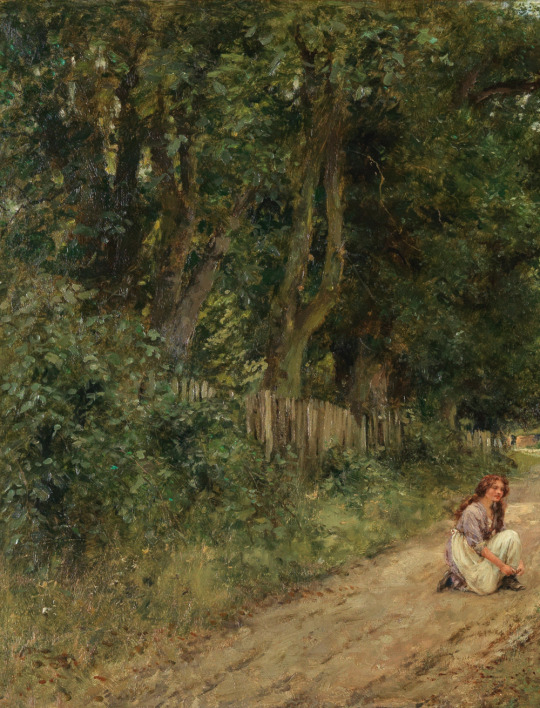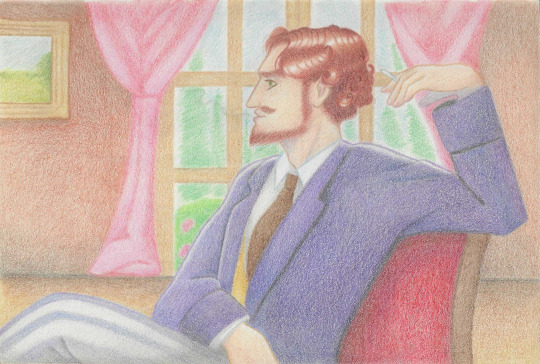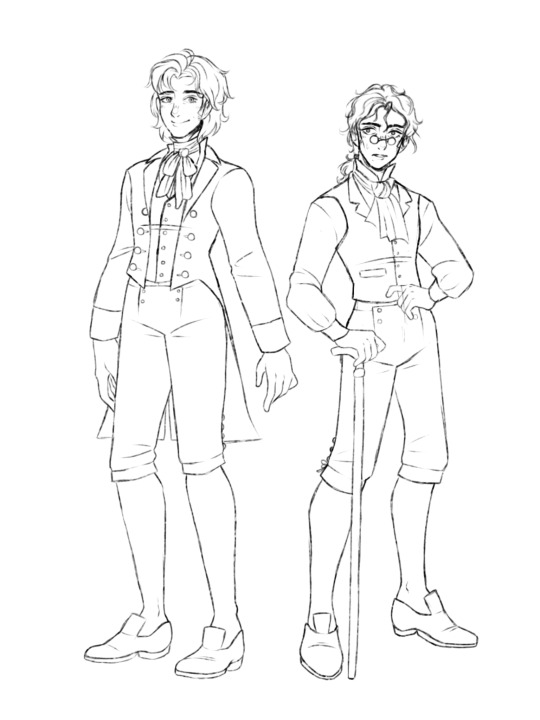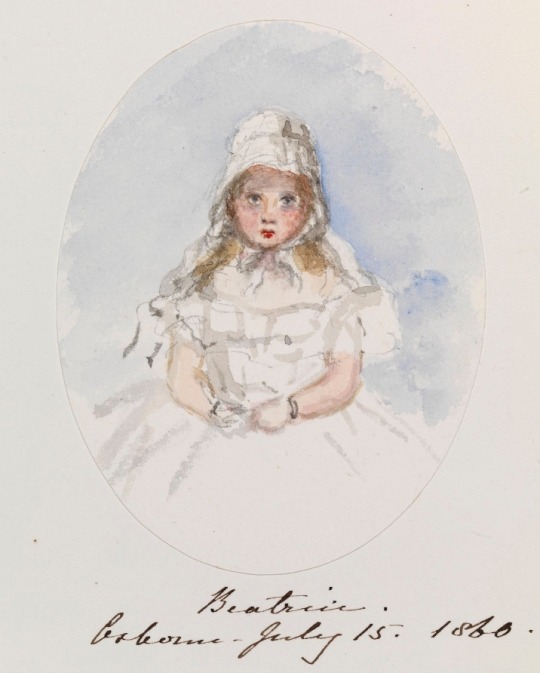#Victorian Era!Henry
Text
I have become hyperfixated on Jekyll and Hyde for whatever reason and so obviously after I went through like every tag on Tumblr and ao3, I decided to make some memes










#henry jekyll#gabriel utterson#hastie lanyon#the strange case of dr jekyll and mr hyde#jekyll and hyde#edward hyde#yes I do know that therapy didn’t exactly exist in the Victorian era
198 notes
·
View notes
Text

Detail from Catherine of Aragon and the Cardinals by William Bromley c. 1866
#catherine of aragon#katherine of aragon#catalina de aragon#art#art detail#tudor history#henry viii#the tudors#english history#tudor era#tudor england#tudor dynasty#tudor period#victorian painting#victorian art#william shakespere#art history
302 notes
·
View notes
Text

Henry Thomas Schäfer (British/English, 1854-1915) • Divinely Fair • 1893
#art#fine art#painting#art history#henry thomas schäfer#british artist#oil painting#victorian era painting#women in white#la robe blanche#the white dress#royal academy#royal academy of arts
390 notes
·
View notes
Photo


A Devonshire lane by Henry John Yeend King
#Henry John Yeend King#genre painting#genre art#landscape#victorian art#victorian era#english painter#19th century art#art#art history#painting#oil painting#oil on canvas#english countryside
925 notes
·
View notes
Text

BUNDLE OF BALLADS by Henry Morley (1891). Embroidered in silk thread and gold with a scrolling tree inhabited by a pair of cats above a pair of monkeys who are teasing a pair of dogs below with a bone on a string .
#beautiful books#book blog#books books books#book cover#books#ballads#henry morley#embroidered#embroidery#book design#victorian era
54 notes
·
View notes
Text

Tobogganing, winter sport in The Victorian Era, chromolithograph by Henry "Hy" Sandham, 1886.
Tobogganing, the sport of sliding down snow-covered slopes and artificial-ice-covered chutes on a runnerless sled called a toboggan. In Europe, small sleds with runners are also called toboggans.
#henry sandham#hy sandham#1886#hy#christmas#christmas illustration#chromolithograph#chromolithography#Tobogganing#winter#winter activity#snow#snow activity#activity#victorian era#victorian#the victorian era#henry hy sandham
61 notes
·
View notes
Text
I think it's rlly interesting how all the "mad" characters in the classic lit I've read are very easily diagnosable and probably would be fine with some fucking therapy.
Dorian Gray is a BPD girlie.
Henry Jekyll has some intrusive thoughts from OCD.
Jonathan Harker has PTSD.
R.M. Renfield has bipolar and psychosis.
Victor Frankenstein is a traumatized autistic.
Roderick Usher has schizophrenia and should leave that house.
I liked Griffin cus I couldn't diagnose him with anything. He's just a top with a lust for blood.
#I don't think it's problematic to state how saneist the victorian era was#but if ppl hate this post too much i'll delete ig#but again as a mentally lll person i do find it funny#This is also just a neurodivergent hc list now#Dorian Gray#Henry Jekyll#Jonathan Harker#RM Renfield#Roderick Usher#Victor Frankenstein#Griffin The Invisible Man#The Picture Of Dorian Gray#TPODG#The Strange Case Of Dr Jekyll And Mr Hyde#Jekyll And Hyde#Dracula#The Fall Of The House Of Usher#Frankenstein#Frankenstein The Modern Prometheus#The Invisible Man#goth lit#gothic lit#gothic horror#classic lit
379 notes
·
View notes
Text
much as i love merlin and arthur they were NOT the blueprint. they were very nearly the blueprint, but the actual og's were from a book written in 1862 by Victor Hugo. that's right. it's enjolras and grantaire. the timeline goes exr-merthur-firstprince
#i'm right#viccy h was doing it before it was a thing#k so enj arthur and henry are all blonde and in a position of power#with a destiny and skill and crushing expectations and incredible loyalty#and socially awkward/clueless (do not tell me arthur is not socially awkward all his friends are just merlin's friends or gwen's brother)#all have a bit of a rivalry with annoying defiant brunette and don't realise how much they love them (exr truther till i die)#the brunettes themselves are annoyed by the blondes and love to antagonise them but end up loving them and dying looking at them (e and a)#R merlin and alex are all snarky bitches with (yet again) a complicated family relationship#a bitchy female best friend (using eponine and morgana for this bc i am an ep and R besties truther)#who know the destiny and how it will end (alex is the only one it turns out for) (r knows they will fail) (merlin knows arthur will die)#but who do everything they can to stay with blonde and prevent the ending (r goes as far as dying with e)#and end up devoting their life to blonde with unfathomable loyalty while also teasing them at every turn#their devotion gets to the point that blonde's life is worth more than their own#merlin#merthur#bbc merlin#red white and royal blue#firstprince#exr#enjoltaire#les miserables#but arthur and merlin are SO exr coded#none of this heartstopper-merlin-firstprince bullshit#heartstopper is the same time pretty much as firstprince and dont even act like the rest of them#they can't JUST be blonde and brunette they need the vibes to go along with it#victorian era- 2000's medieval- modern
33 notes
·
View notes
Text

Lord Henry Wotton 🚬
#the picture of dorian gray#lord henry wotton#fanart#dorian gray#oscar wilde#traditional art#character design#tpodg#illustration#victorian era#19th century#vintage#fashion#color pencil#classic lit#classic literature#gothic#gothic literature#gothic lit art#english literature
104 notes
·
View notes
Text

I don't CARE that queer meant odd or off-putting when this was written HYDE IS GAY AND IT'S CANON
#the strange case of dr jekyll and mr hyde#edward hyde#dr jekyll#henry jekyll#jekyll and hyde#robert louis stevenson#gothic literature#gothic#victorian#1800s#victorian era#robert lanyon#dr lanyon#gabriel utterson#gabriel john utterson#gay#gay man#lgtbqia+#lgtbtq#join my thick hyde cult#join my cult#thick hyde cult#thick hyde supremacy#we need to spread thick hyde propaganda#i'm tagging everything about Hyde with my cult bc it's funny af
21 notes
·
View notes
Text

I got a new pen display today! So I’m going to attempt to line and colour this sketch tonight while I finish watching Frankenstein.
#my phone is much too small for me to draw on anymore#henry clerval#victor frankenstein#frankenstein#frankenstein fanart#art wip#sketch#my victor is based off of josé pablo castro cuevas#and my henry is designed after dan stevens#also i can’t recall the last time i drew normal clothes#i always draw regency and victorian era fashion#AND nearly all my ocs that i give a damn about are set in the 1800s
20 notes
·
View notes
Text

Queen Victoria in Catherine of Aragon’s Closet. Detail from The Marriage of the Prince of Wales with Princess Alexandra of Denmark by William Powell Frith (1865)
#her pomegranate🩷🩷🩷#victorian painting#queen victoria#victorian era#victorian#catherine of aragon#katherine of aragon#catalina de aragon#art#art history#history of art#victoria#victorian period#victorian art#victorian age#tudor history#henry viii#the tudors#english history#tudor era#william powell frith
46 notes
·
View notes
Text
FEATURE | Into the Decadent Life of Dorian Gray: How Victorian Aestheticism Led to His Demise
Originally published as a serial in 1890 and in book form the following year, Oscar Wilde's only novel The Picture of Dorian Gray is one of the best examples of late Victorian Gothic horror. The late 19th century aestheticism and decadence are among the key concepts that Wilde creatively weaved into his novel.
Behind the Aesthetic movement
During the 19th century, aestheticism was an art movement known as "art for art's sake" which favors the aesthetic value of the arts, literature, and music rather than their socio-political purpose. This movement focuses on producing art that is deemed beautiful rather than having a deeper meaning. Its philosophy is meant for escaping the ugliness of the materialism brought by the Industrial Age, thus only absorbing beauty and good taste. It also challenges the norms during the period where Victorians would often associate ethical and moral roles to any form of art, which is the very opposite of the movement's perspective.
While a critical reflection on the arts with the aim of getting through the hardships of a new age by recognizing the necessity of beauty in everyday life, the movement also gave rise to ethical questions–creating a conflict between aestheticism and morality, which can be perfectly observed in The Picture of Dorian Gray.
A stirring and provocative introduction
The novel probably has one of the best prefaces ever written. Novel prefaces during the Victorian age were usually crowded with characters, with long paragraphs that are thickly plotted. Prefaces invite the readers inside the book by stating the purpose, and Wilde was successful in doing so. He wrote the preface without complicated words, it was written realistically and with much thought.
In reference to the Aesthetic movement, Wilde asserts in the preface that art's aim is to only reveal art and conceal its artist. He also talks about the critics of art, who he defines as those who can translate into another manner or material. Detesting people who find ugly meanings in beautiful things, he calls them corrupt and uncharming; this is a fault. Those who are cultivated are the ones who can find beautiful meanings in beautiful things. Then, he ends it strongly with, "All art is quite useless."
Such an introduction will put the readers into deep thought, challenging someone's beliefs on the matter whether one agrees or not. And with the intriguing notions laid upon them, one may argue against it or further interpret the concepts on their own.
Navigating the tenets of Aestheticism in the novel’s synopsis
Opening with a vivid image of the setting, artist Basil Hallward paints Dorian Gray's portrait in his London studio. With them, Lord Henry "Harry" Wotton is smoking an opium-tainted cigarette while taking a shine to the fine young man with an "extraordinary personal beauty." Speaking in aphorisms, and in mostly profound manner, he slowly encourages Dorian to indulge deep into life's greatest pleasures, advising him to look constantly after new sensations in life despite Basil's begging that he should not corrupt Dorian with his words that reek of hedonistic values. Lord Henry, depicted as a manipulator as he picks a flower's petals one by one, would soon have a large role in Dorian's way of life.
As Basil finishes Dorian's portrait, the painting reveals such beauty and is praised by Lord Henry as being the artist's finest work ever done. Suggesting that it must be shown in the best galleries possible, Basil quickly insists that he does not want the portrait to be seen. He says, "I have put too much of myself in it."
Basil worries that showing his work will reveal so much of himself, that spectators may uncover more of his personal and artistic idolatry of Dorian than the fair subject himself. This echoes Aestheticism's principles, where artists must be dismissed; create only a beautiful work and not put meaning into it. He refuses to have his work be explored by critics, and be seen as a biographical expression.
Looking at the artist's finished work, Dorian marvels at how young and beautiful he looks. He wishes that he would always remain young, and that the portrait must become the one to age and wane. In order for such a wish to be granted, he even declared he would sell his soul. And this is the moment as if he has made a pact with the devil.
Dorian coddles with a life of pleasure, living a life with his gift of youth, just as Lord Henry has advised him. Soon he meets Sibyl Vane, a theater actress, and falls in love with her art–performing on stage with different roles embodying the aspects of tragic love: Cordelia, Juliet, Desdemona, and Portia among others. She artistically acts on stage, as if completely losing herself and fully becoming the characters she plays. This is what Dorian falls in love with, her art as an actress. Sibyl falls in love with Dorian, she then experiences real love and realizes the falseness she has been doing onstage.
Sibyl initially inspired Dorian to turn away from decadence. Dorian discusses with Lord Henry the emotions that Sibyl makes him feel, "Her trust makes me faithful, her belief makes me good. When I am with her, I regret all that you have taught me." But when Sibyl performs as Juliet on stage, she seems artificial. She hopes that Dorian will take the hint that she does not want to act anymore after falling in love. Disappointed and ashamed, Dorian stays the whole play after everyone has left. "You have killed my love," he mutters. And then he leaves as Sibyl pleads and cries on the floor.
Sibyl symbolizes truth and purity, while Dorian is nothing but deceit and selfishness. Dorian, once again, is swayed by the values taught to him by Lord Henry. Soon, Sibyl becomes like the tragic characters she portrays, she meets a bitter end when she takes her own life after Dorian turns her down for losing her ability to act. Without this art of hers, she is now meaningless. Henry tells Dorian about the girl's death and says, "The girl never really lived, and so she has never really died."
Aestheticism's values deeply affect how Dorian sees people around him, same with how he treated Sibyl. He only saw value in her knowing that she was a brilliant actress. He mourned for her when she died as Cordelia. But never did he feel an ounce of sadness, when she died as Sibyl Vane.
After Sibyl's death, Dorian feels there is nothing more to stop him from treading a terrible path of sin and immorality. He goes on with self-indulgence, and there is no coming back. Sin after sin, he commits all things hideous. His physical body remains perfect but his portrait changes, becoming uglier as days of sin go by. Shocked by the changes in the portrait, he locks it away in his house's attic. Once again, after ceaselessly doing immoral things, he looks at the portrait and an old, evil face is revealed to him.
A tragic but fulfilling ending
13 years pass by and Dorian remains young and attractive. Dorian shows Basil his secret, the portrait that he is hiding, and the artist is appalled by the sight of his then beautiful work. Dorian then stabs Basil to death. Sibyl's brother, James, also went to exact revenge on him but is shot by one of the members of his shooting party. These events continue to disfigure his portrait. He tries to believe that the portrait may improve if he starts to behave, but he looks at the portrait again and his old self remains with the face of an evil man.
Dismayed and outraged by the loathsome sight, Dorian shoves a knife into the canvas to destroy the evidence of his sin. The sin he wants to destroy is himself. So when the servants arrive in the attic after hearing a blood-curdling sound, they witness Dorian's beautiful portrait just as Basil has painted it, but there lies on the floor a body of wrinkled old man with a horrid face.
The ending scene, as tragic as it appears on the surface, is perfectly constructed. All the events in the story, each circumstance of the characters that have different values and especially Dorian's journey of sin, led to this very end–to his ultimate demise. An ending he deserves, the moment of his death with the magical portrait at the scene that displayed strong symbols–him being one with the portrait maintaining his immortality, the depravity in the painting that he longs to kill instead of facing it.
Dorian Gray and the demise of his Aesthetic life
Dorian's ending is a reminder that no one can get away with everything. He went about in his life with the values of aestheticism imparted to him by Lord Henry, and that brought his downfall at the end. The movement should have only been a means to distract oneself from the industrialization and the physical harms it had on people. But too much indulgence in just beauty on a surface level gets rid of other things that are also important.
Living this life must also take some inspiration. Creating art can be both for the art and artist's sake, so as creating meaning or not having meaning at all. Sibyl is not meaningless when she loses her ability to act, it is not meagerness to finally embrace and see oneself as who they truly are. Basil should not have been shamed for keeping something so precious to him. Dorian would not have been put into a life of decadence if only he considered both having youth and not having youth as a gift, if only he considered to also put value in his attitude as he does in his looks.
It is mentioned how there is conflict between aestheticism and morality which is discernible in the novel. The very conflict presented there is Dorian Gray himself, who is such an exceptionally beautiful-looking young man but has a crooked and amoral attitude–which led to his own downfall. What lies beneath the surface is more worthwhile after all.

#the picture of dorian gray#oscar wilde#victorian era#aestheticism#basil hallward#lord henry wotton#dorian gray#sibyl vane#book review#feature#writing#graphic art#reading#novel#philosophy#art movement#gothic
77 notes
·
View notes
Text

Lieutenant Henry T.D. Le Vesconte, from the so-called lost set of Franklin Expedition daguerreotype photographs, now at auction at Sotheby's.
I really, really thought that I had made a complete transcription of a letter that Henry wrote to his father dated October 17th 1844—but I did not. He penned this letter once he was back in Portsmouth from HMS Clio, and it is seared into my brain where he mentions sending £30 to the tailor—approximately $4462.74 in current USD according to a historical currency converter.
Almost certainly, that smart-looking uniform in his 1845 photograph aboard HMS Erebus was purchased at this time. It has the slim cut of early 1840s men's fashion, and like all Royal Navy uniforms of the time it was bespoke and the fit reflects Le Vesconte's taste.
#franklin expedition#royal navy#1840s#henry le vesconte#henry thomas dundas le vesconte#fashion#dressed to kill#early victorian era#yes yes i know historic currency conversion has its issues#but the point is he dropped a lot of money on new threads#the TD stands for top dresser
57 notes
·
View notes
Text

Queen Victoria’s painting of her daughter Princess Beatrice, 15 July 1860.
—
Victoria (Alexandrina Victoria; 24 May 1819 – 22 January 1901) was Queen of the United Kingdom of Great Britain and Ireland from 20 June 1837 until her death in 1901.
Her reign of 63 years and 216 days is known as the Victorian era and was longer than any of her predecessors.
Princess Beatrice VA, CI, GCVO, GBE, RRC, GCStJ (Beatrice Mary Victoria Feodore; 14 April 1857 – 26 October 1944), later Princess Henry of Battenberg, was the fifth daughter and youngest child of Queen Victoria and Prince Albert.
Princess Beatrice was also the last of Queen Victoria's children to die, nearly 66 years after the first, her elder sister Alice.
75 notes
·
View notes
Text


"The Turn of the Screw", 1974 dir. Dan Curtis
Thriller Video VHS, hosted by Elvira
#vhs tapes#vintage horror#the turn of the screw#dan curtis#henry james#elvira#childhood memories#gothic horror#victorian era#thriller video#lynn redgrave#jasper jacob#kathryn leigh scott#megs jenkins
42 notes
·
View notes